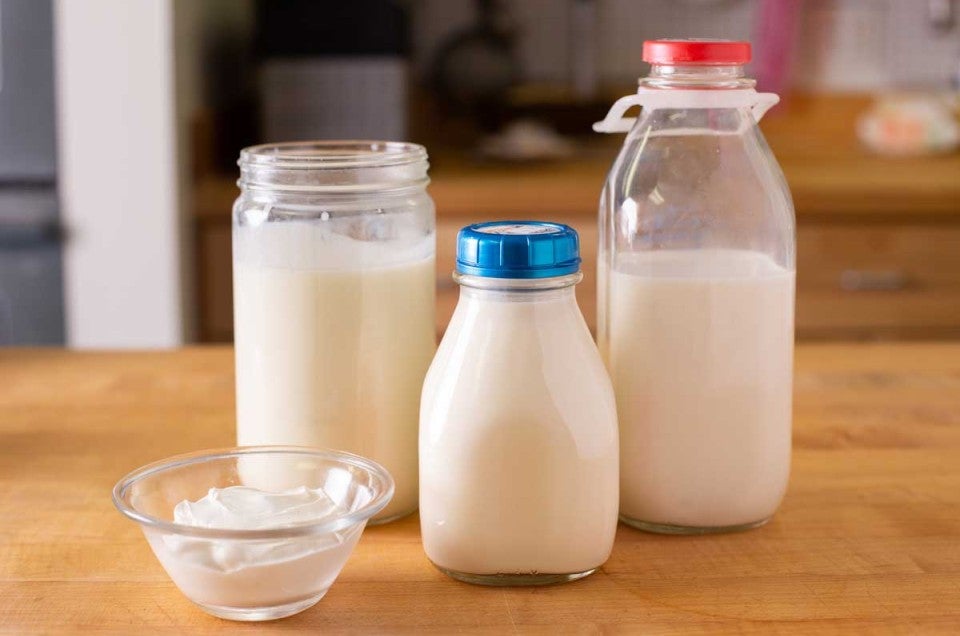


You cast your eyes over the list of ingredients in this new recipe you’re trying and lo and behold, there’s that darned buttermilk. You don’t have any buttermilk; in fact, you never buy buttermilk because there are very few baking recipes that use it and who wants an almost-full quart of buttermilk sitting in the back of the fridge making you feel guilty for contributing to food waste? So you sigh and turn to another recipe: one without buttermilk. But is there an easy substitute for buttermilk — something you already have in your kitchen?
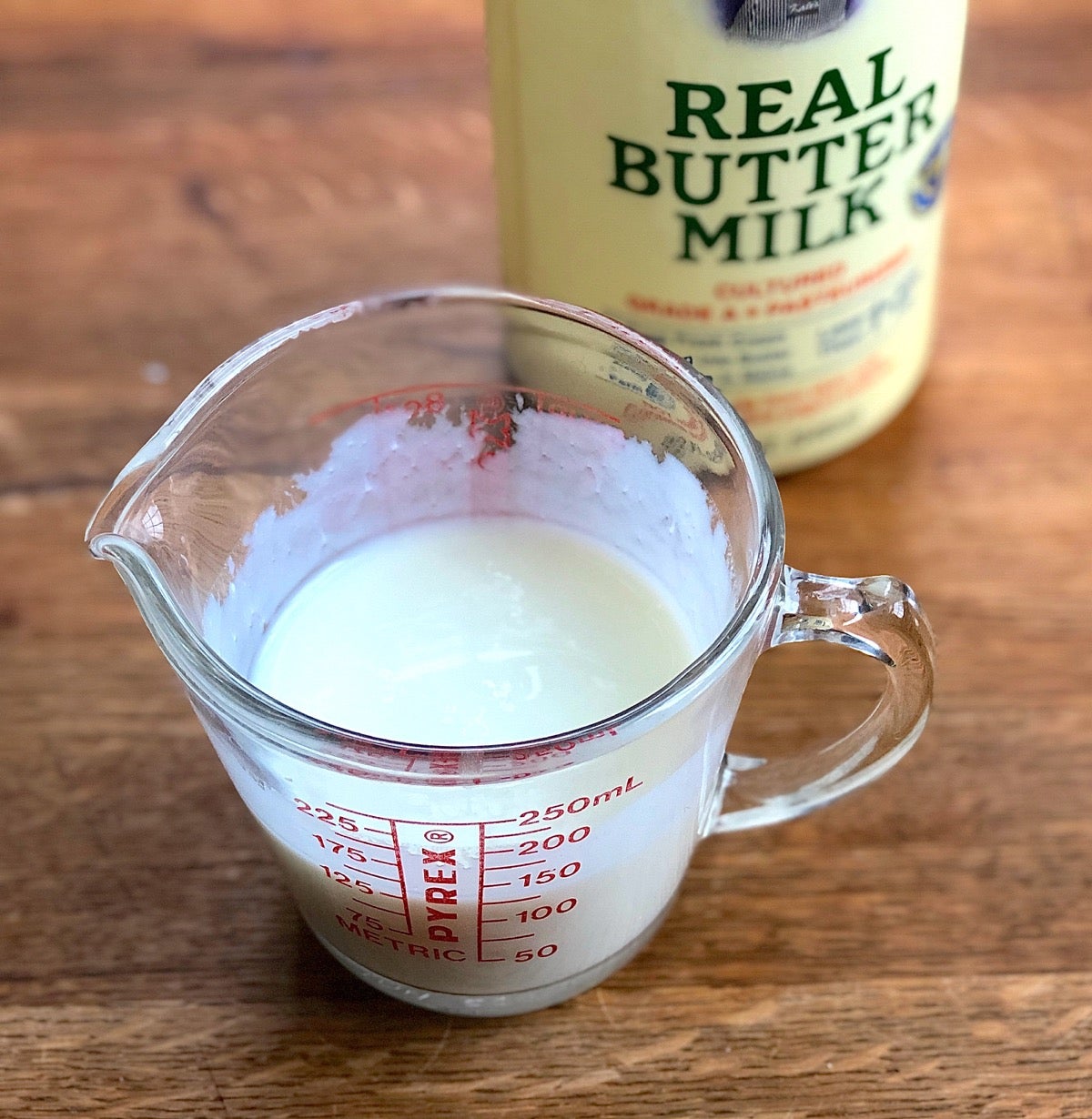
First, let’s clarify what buttermilk is, exactly. Traditional buttermilk is the thin, watery liquid left over after cream is churned into butter. It’s not commonly available in grocery stores — and hasn't been since the 1920s, when it was supplanted by our present-day cultured buttermilk, low-fat or skim milk that’s been inoculated with milk-friendly bacteria to thicken it and make it sour.
Many of the recipes you see calling for buttermilk are classics: pancakes, biscuits, cake. Buttermilk was a readily available ingredient (and one not to be wasted) back when butter-making was a common household task. Prized for its leavening ability when paired with baking soda, it was the basis of many a light and fluffy pancake and cloud-like biscuit.
Today, buttermilk isn’t a pantry staple for most of us, but rather something you purchase for one particular recipe. Which brings us back to where we started: If you don’t want to buy a quart of buttermilk, what can you substitute?
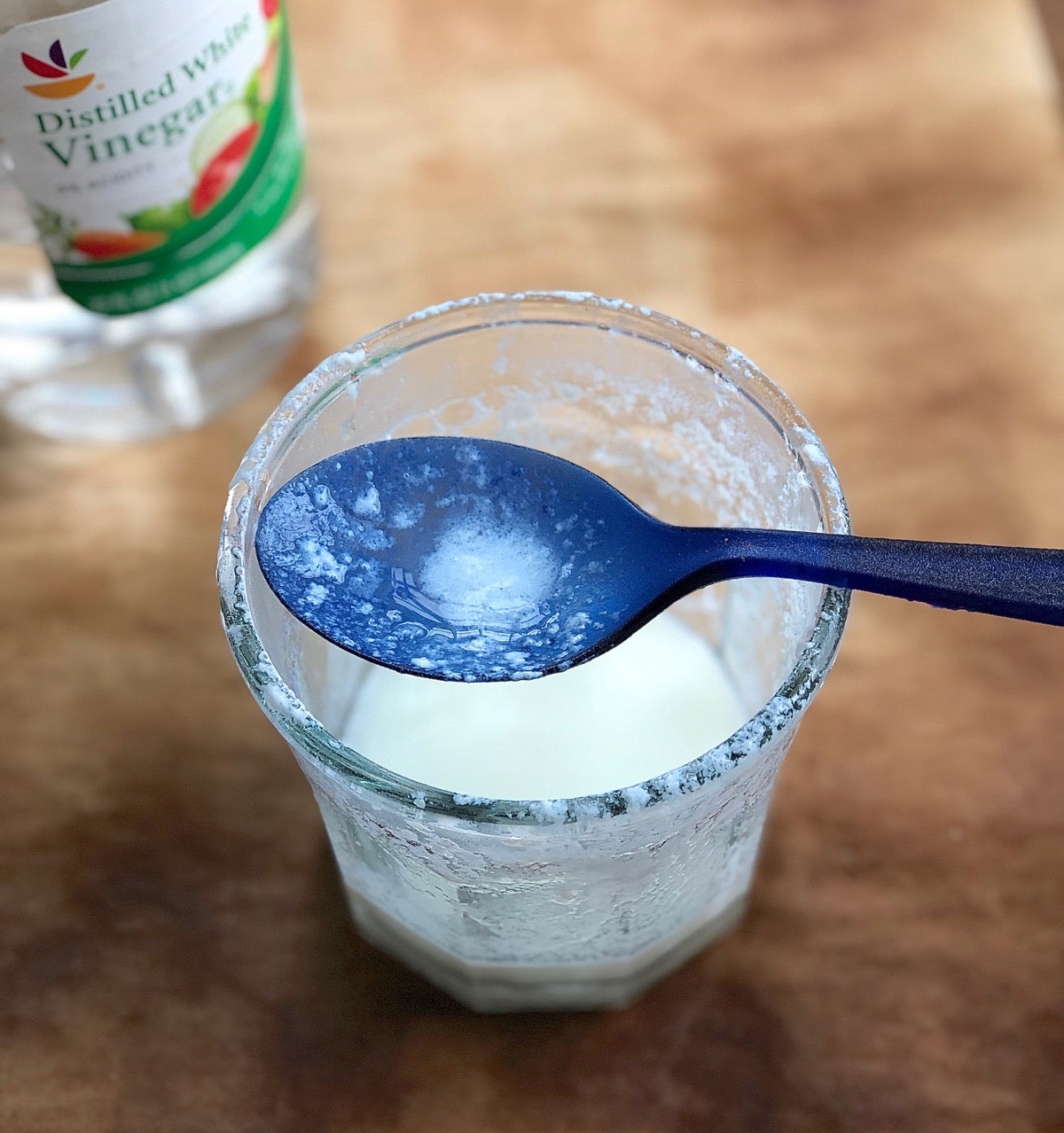
Here are the most common suggestions:
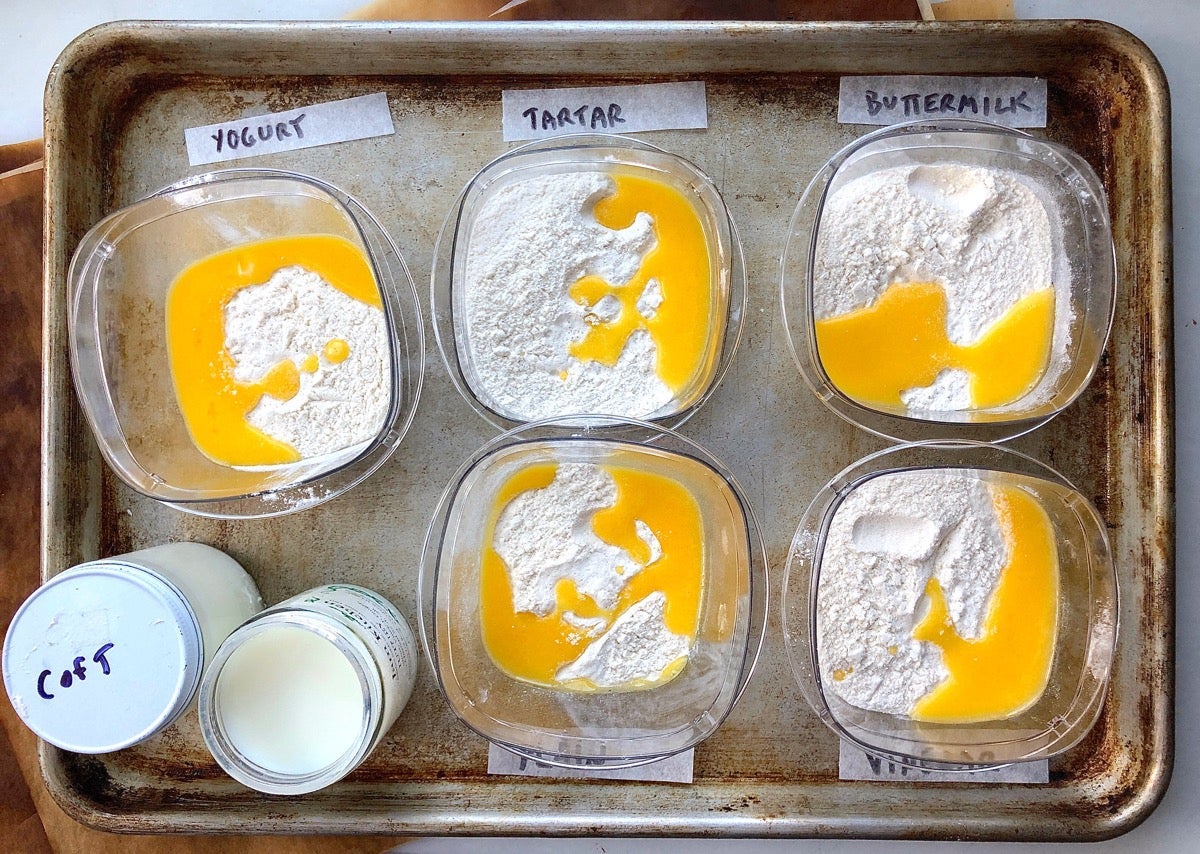
I decided to try several of these options in pancakes, biscuits, and a favorite buttermilk cake.
First off, I eliminate kefir (not a pantry staple) and sour cream (similar enough to Greek yogurt).
I also cross standard yogurt off the list, because how easy is it to find “un-Greek” yogurt these days? Scanning the shelves in my local supermarket I find one small section of plain yogurt — in quart-sized containers. Heck, I might as well buy a quart of buttermilk as plain yogurt.
But thick Greek yogurt — it’s ubiquitous. And many of you probably keep a container or two in your fridge most of the time for snacking, mixing with granola, or whipping up a smoothie.
From previous pancake experiments in our test kitchen, I know that Greek yogurt mixed 1:2 with 1% or skim milk (one part yogurt, two parts milk) yields the best results. It's also an easy ratio: mix one small container (5.3 ounces) of Greek yogurt with 1 1/3 cups of milk to yield 2 cups of buttermilk substitute.
So I test milk with vinegar, milk with cream of tartar, and thinned Greek yogurt against the control: buttermilk. While I'm at it, I take a step back and decide to test the easiest substitution of all: plain 1% milk in place of buttermilk.
Let's look at the results.
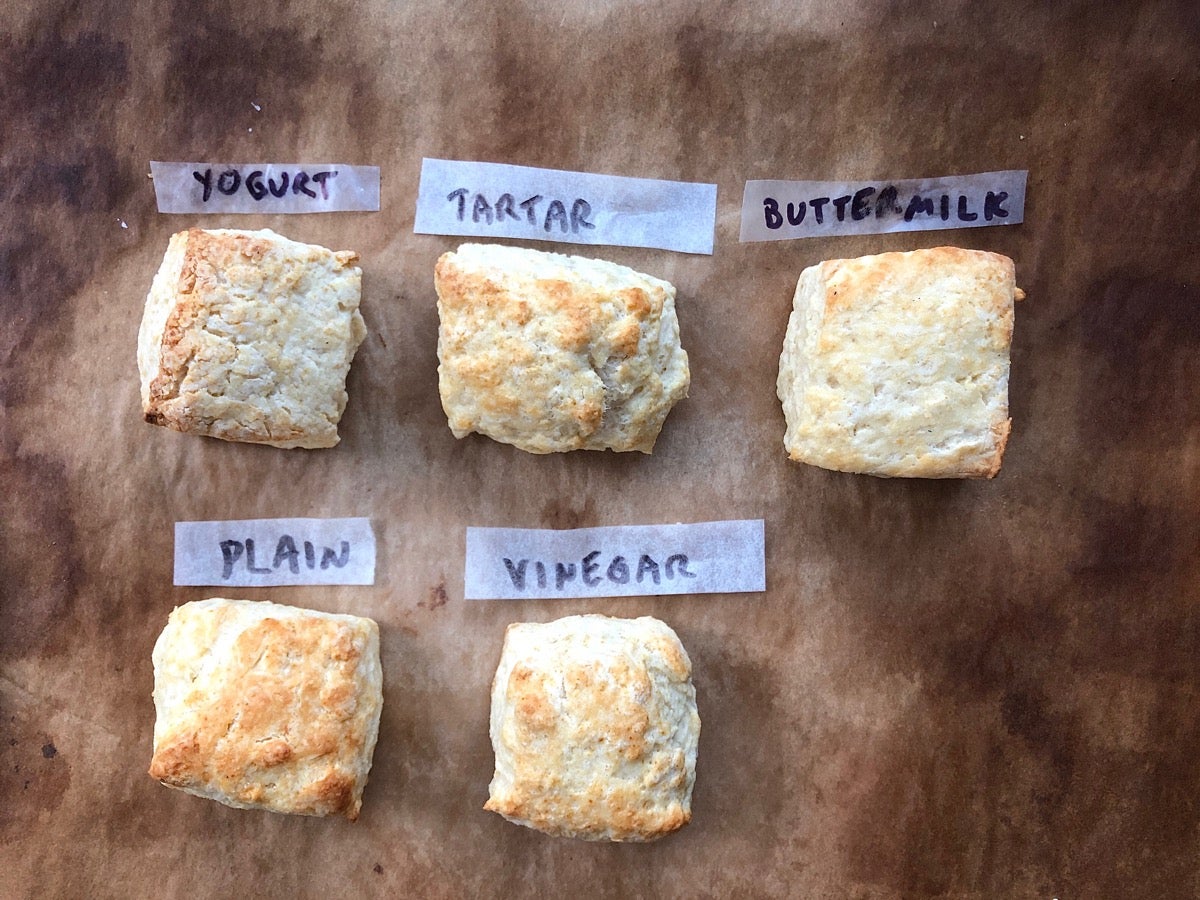
My first test, Baking Powder Biscuits, turns out to be a harbinger of things to come: all of the biscuits rise nicely and brown well. On sampling, their texture is the same — but the flavor of the buttermilk biscuits is best, a slight tang mixed with a hint of sweetness (is it the milk solids?). The yogurt biscuits taste almost as good. The vinegar and cream of tartar biscuits seem to lack depth of flavor, while the plain milk biscuit simply tastes flat.
Winner: Buttermilk
Runner-up: Greek yogurt mixed with milk
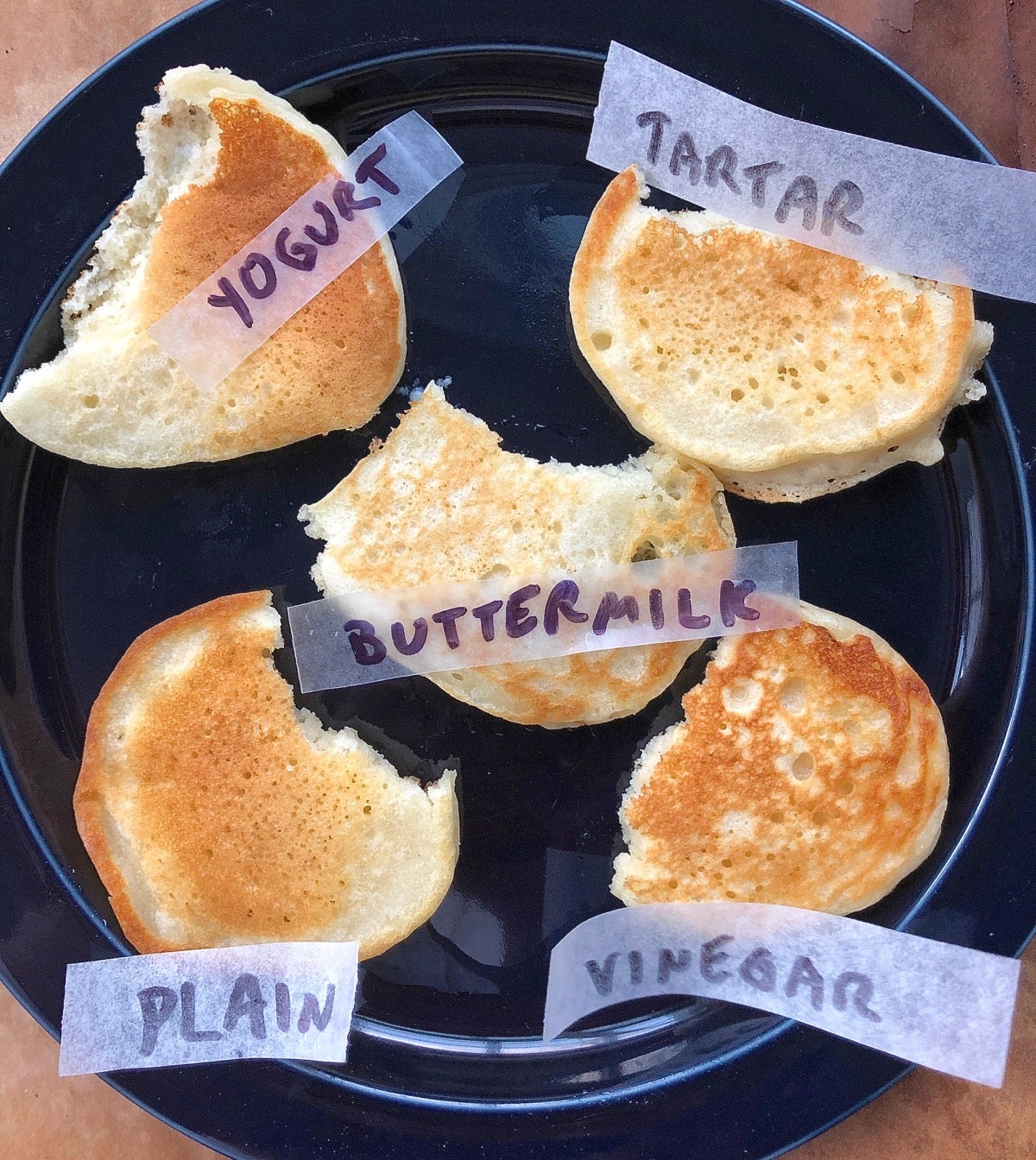
Substituting anything for buttermilk in Buttermilk Pancakes certainly belies the recipe's name. But aside from that, I notice results very similar to the biscuit experiment. The texture and browning of each of the pancake batches are similar — with the exception of the plain milk pancake, which rises less. But when it comes to flavor, the buttermilk and yogurt pancakes are neck and neck, with the others lagging slightly behind.
Winner: Buttermilk and Greek yogurt mixed with milk (tie)
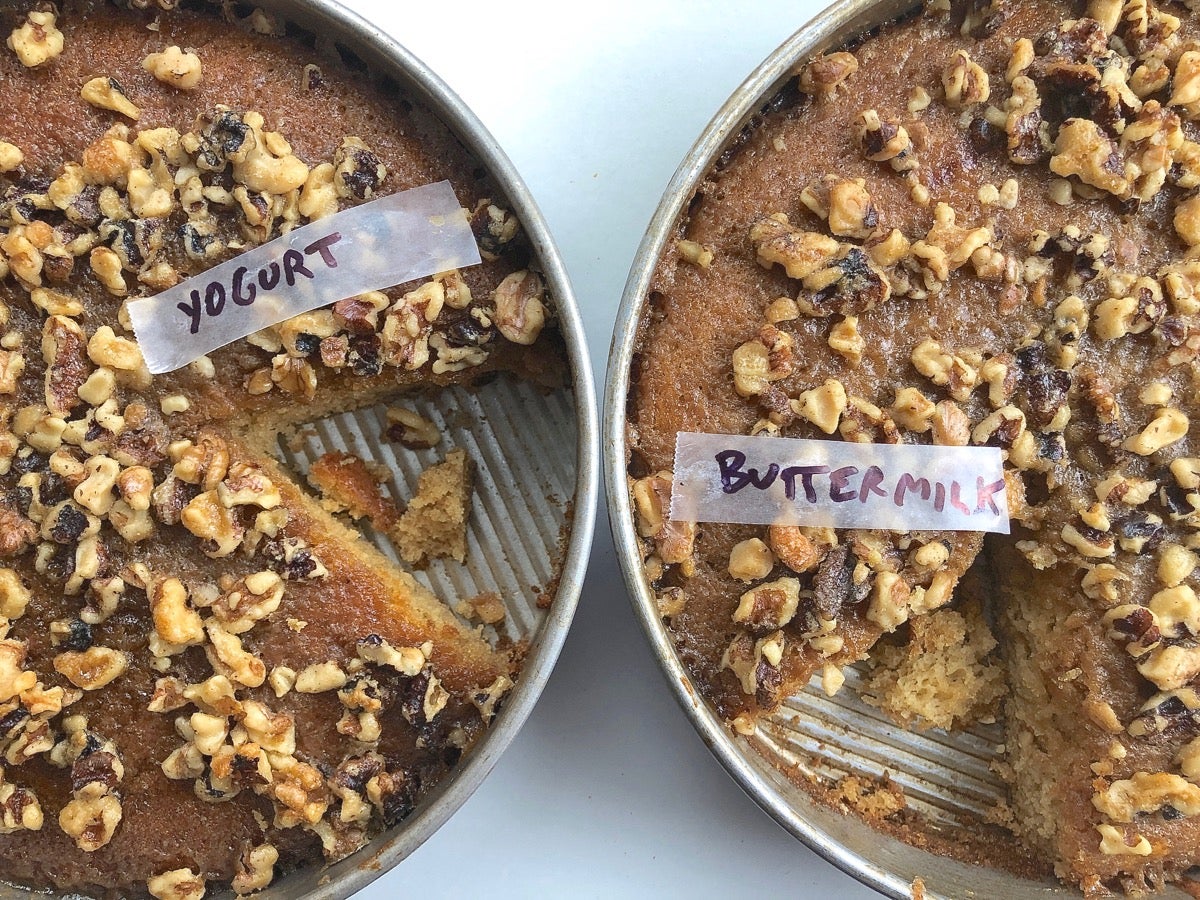
This Farmhouse Buttermilk Cake recipe is an old favorite of mine. The photo above doesn't do it justice; I was out of pecans so substituted walnuts, and then didn't chop them finely enough (rush, rush!). But this tender, golden cake, topped with its buttery, nut-laden syrup, is a true crowd-pleaser.
Compared to biscuits and pancakes, with their simple ingredients, this cake is complex: brown sugar, butter, vanilla, and nuts all contribute to the flavor profile. And because of that, the subtle, layered flavor of buttermilk in the cake is lost; you'll do just as well using any of the substitutes.
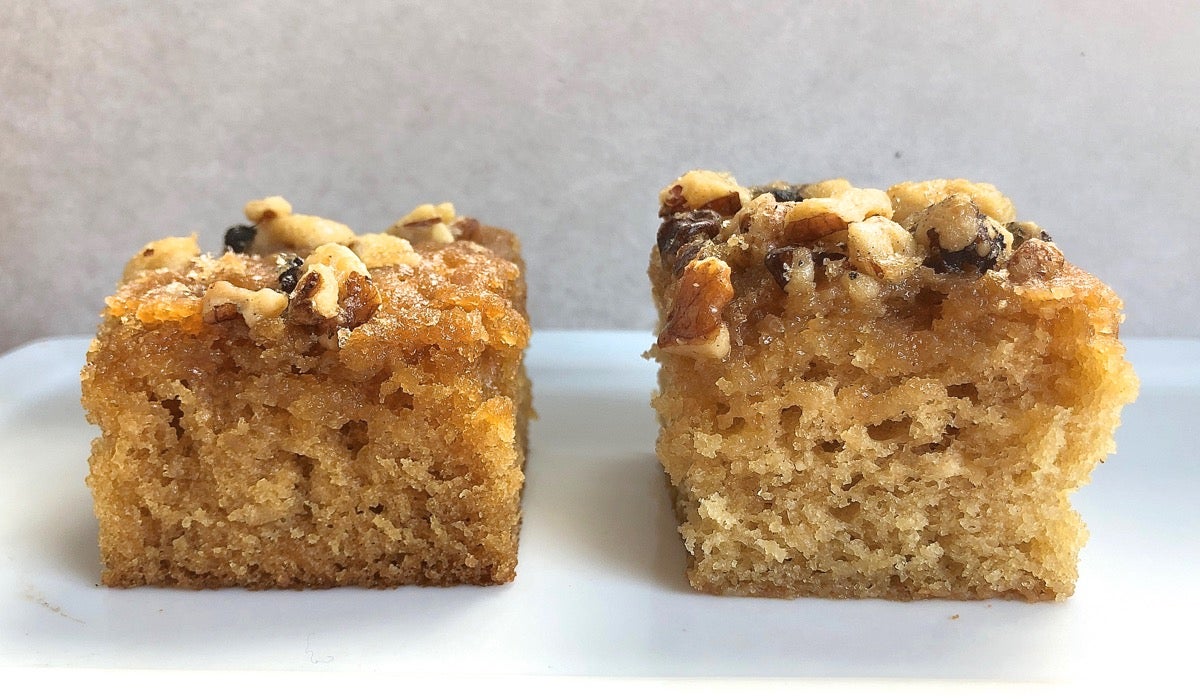
That is, with the exception of plain 1% milk. This old-fashioned cake is leavened with baking soda. Using plain milk, which lacks buttermilk's acidity, results in a darker-colored, denser cake.
Winner: All suggested options except plain milk
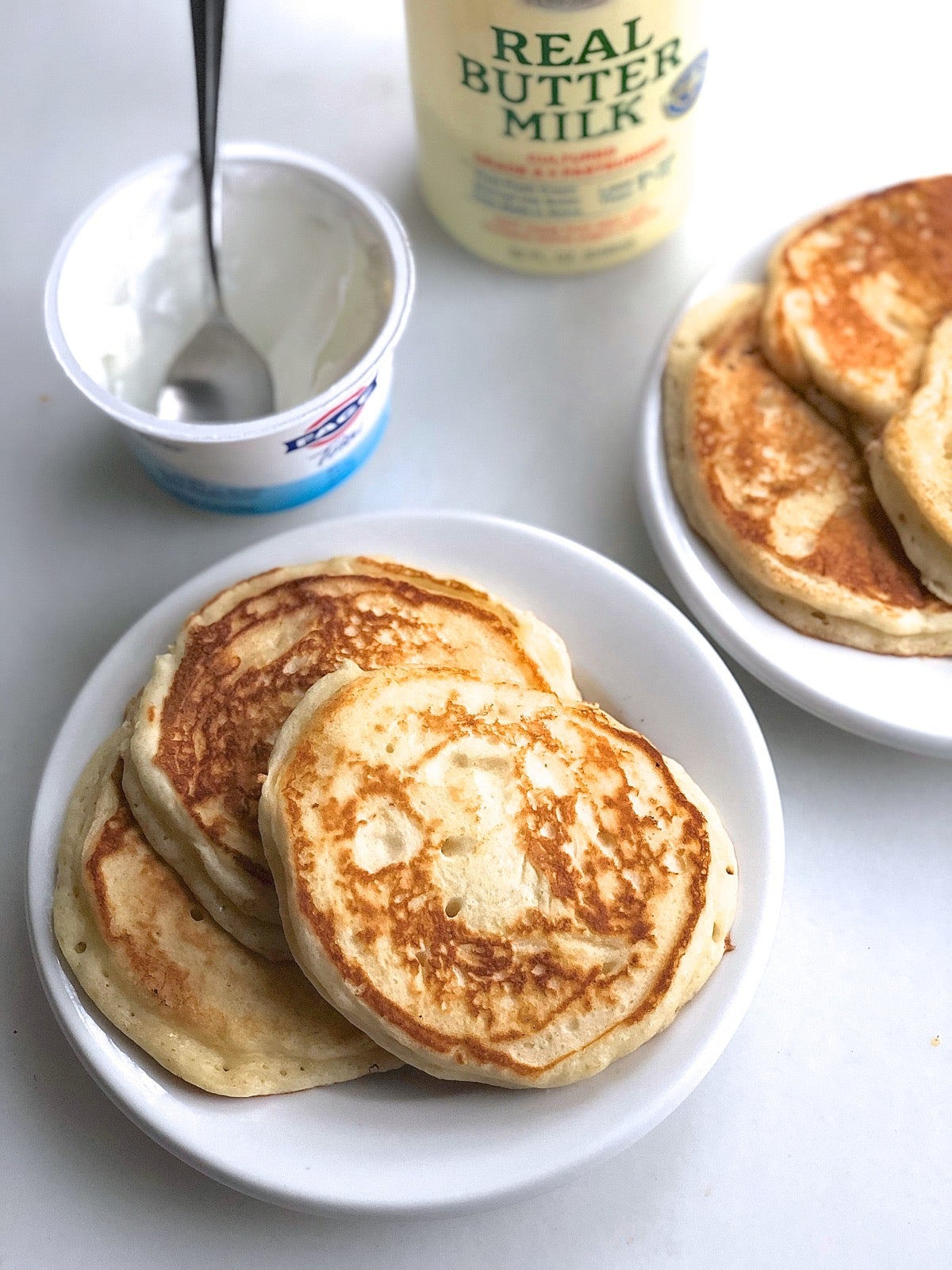
One last note about liquid buttermilk: If you buy a quart and don't use it up, you can always freeze it in 1/2-cup (or your preferred size) portions. It'll probably separate when you thaw it, but no worries; it's fine to use.
Now, what about dried buttermilk powder? I didn't include it in my testing results as, again, it's not an ingredient you'd likely stock in your pantry on a regular basis (unless you're an inveterate buttermilk baker). But it works as well as the "soured milk" options (milk + vinegar or cream of tartar). While lacking real buttermilk's rich flavor, it does react well with leaveners and help provide a good rise.
Speaking of biscuits, my fellow blogger Kye did a comprehensive test of different fat/liquid combinations in biscuits. (Spoiler alert: Her favorite biscuits include butter and buttermilk). For Kye's complete results, see Fats and liquids in biscuits: choosing your favorite texture.
Cover photo by Jennifer Bakos


December 17, 2020 at 11:57am
I am curious. If buttermilk is the fluid left over from making butter why is the commercial product made by culturing skim or 1% milk ? My question is what is the flavor profile of real buttermilk? Is it tangy as though it was cultured? Why?
December 29, 2020 at 12:28pm
In reply to I am curious. If buttermilk… by John Walters (not verified)
Hi John, What is "real" buttermilk? Who is to say? Originally, it was the leftover liquid from making butter. Now it's cultured from milk: skim, whole, or whatever the manufacturer chooses to use. Traditional buttermilk is less acidic and thinner than cultured buttermilk, but it IS still acidic, as it's made from churning cultured (fermented) cream.
February 28, 2021 at 10:16am
In reply to I am curious. If buttermilk… by John Walters (not verified)
I suspect that way back when buttermilk was the liquid left from churning, that it was tangy. Milk was left to sit at room temperature until the cream came to the top, then was skimmed off. The cream essentially “pre-cultured” itself from bacteria present in the dairy room.
November 7, 2020 at 11:00am
I’m with @Mar, would love reverse instructions! So funny, I’m from the South and usually have buttermilk on hand, and I keep buttermilk powder in the fridge for back up. I use buttermilk often for yeast breads when I don’t have whole milk on hand for baking (I drink skim), but I’m at a loss when it comes to recipes that have baking powder and/or soda. Do I omit/decrease baking powder and keep or increase the soda amount? A reverse tutorial would be helpful!
November 9, 2020 at 9:41am
In reply to I’m with @Mar, would love… by Kim (not verified)
Hi Mar, when using buttermilk instead of milk, try reducing the baking powder to 1 teaspoon and the baking soda to 1/2 teaspoon. Happy baking!
October 19, 2020 at 7:18pm
Has anyone tried using yogurt as a source of live cultures and mixing a small amount with milk, leaving it to ferment at room temperature? Would that produce anything like buttermilk?
October 22, 2020 at 9:16am
In reply to Has anyone tried using… by Rico Altman-Merino (not verified)
Hi, Rico! Culturing milk using yogurt is typically how one makes more yogurt. That being said, you can absolutely use yogurt thinned with a bit of milk as a buttermilk substitute, if you like!
February 4, 2023 at 7:44am
In reply to Hi, Rico! Culturing milk… by kmayerovitch
What ratio would you use for plain (non Greek) yogurt. I make my own lactose free and would like to try using that in the substitution
February 4, 2023 at 9:25am
In reply to What ratio would you use for… by Gem (not verified)
Hi Gem, you can still thin your lactose free yogurt with a bit of water and use the same ratio. Happy Baking!
May 25, 2020 at 7:16pm
Great recipe! I want to put in a plug for regular yogurt, though. Organic (no additive) yogurt works fine and I have no trouble finding it. And the waste whey from Greek yogurt manufacture has become one of the biggest pollution issues for the dairy industry (yogurt is made first and then drained of the whey). Plus, if you make Greek yogurt at home, you can use the whey in bread or freeze it. If you can find Straus's European Style whole milk yogurt (mostly California), you can use it with a minimum of thinning; it can be poured.
Pagination